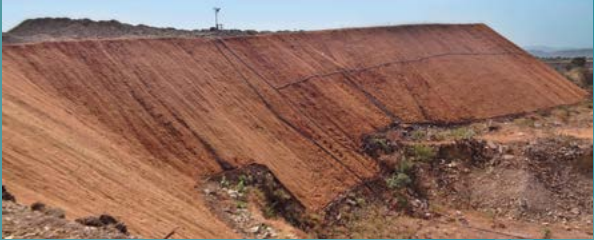Limestone is a naturally occurring material extracted through opencast mining practices. It is a high volume bulk mineral, which calls for the handling of a huge amount of overburden material (OB) at the beginning of the mining project. In mining terminology, overburden is referred to the material that lies above an area that lends itself to economical mineral exploitation. This OB material includes rocks, soil and other contaminants around the deposits of the main material of economic interest.
The ratio of OB material to be removed to the mineral to be produced during the whole project life is known as the stripping ratio. In India, the average stripping ratio for limestone is 1:1.05, ie, ~950 kg of OB material is required to be removed per tonne of limestone extracted.1
OB material handling is a very crucial aspect of opencast mining development projects. Considering the generation of huge volumes of waste material right from the beginning of the project, it needs to be carefully stacked and safely managed. The Indian Cement Industry is largely involved in the mining of limestone following proper techniques for OB dumps design, stabilisation and value addition.
Slope stability of OB dumps holds prime importance as continuous tipping of the waste material tend to result in the formation of steep slopes at the dump. The Indian Cement Industry follows stringent protocols and guidelines prescribed by the Directorate General of Mines Safety (DGMS) and the Indian Bureau of Mines, Government of India. This involves earmarking sufficient space for the external dumps, appropriate bench height, optimised slope angle, study of rock and soil mechanics, etc.
To prevent air pollution by wind erosion, OB dumps are appropriately stabilised by plantation and other novel techniques such as use of Geotextiles, vetivers and Miyawaki techniques, etc.

Plantation is often the best solution for OB dump stabilisation. The biggest challenge, however, is the healthy survival of plantation over the loose dump material. Several Cement companies in India have adopted laying of coconut fibre blankets on the slope before preparing for plantation. This practice not only checks the water and air led erosion from the dumps, but it also leads to moisture retention for healthy plantations till they become self sustaining and resilient enough to survive weather extremities. To ensure better plantation, topsoil is always stacked and preserved separately for later spread over the surface of OB dumps.
To handle heavy rainfall and drainage around dumps, Cement Industry follows the provision of creating appropriate garland drains and retaining wall structures around the OB dumps. Garland drains specifically help in arresting silt and sediments flow from soil and mineral dumps. These drains are always designed to handle sudden peaks in rainfall with a provision of time to time desiltation.
The Indian Cement Industry follows best practices above and beyond the statutory protocols prescribed by the regulatory agencies. Establishing a healthy and stable vegetation cover always remain a long term strategy for the OB dump stabilisation.